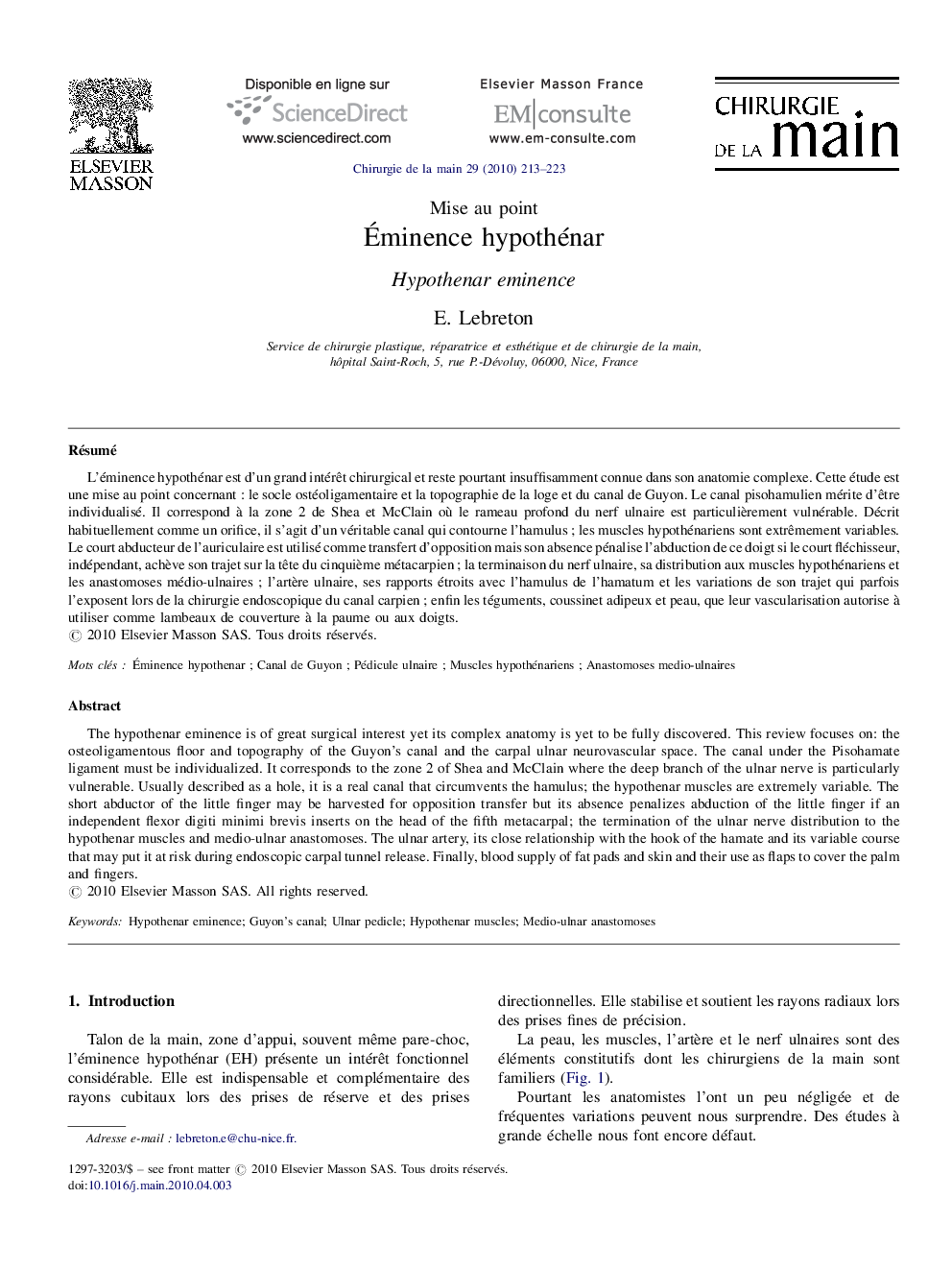| Article ID | Journal | Published Year | Pages | File Type |
|---|---|---|---|---|
| 4049501 | Chirurgie de la Main | 2010 | 11 Pages |
RésuméL’éminence hypothénar est d’un grand intérêt chirurgical et reste pourtant insuffisamment connue dans son anatomie complexe. Cette étude est une mise au point concernant : le socle ostéoligamentaire et la topographie de la loge et du canal de Guyon. Le canal pisohamulien mérite d’être individualisé. Il correspond à la zone 2 de Shea et McClain où le rameau profond du nerf ulnaire est particulièrement vulnérable. Décrit habituellement comme un orifice, il s’agit d’un véritable canal qui contourne l’hamulus ; les muscles hypothénariens sont extrêmement variables. Le court abducteur de l’auriculaire est utilisé comme transfert d’opposition mais son absence pénalise l’abduction de ce doigt si le court fléchisseur, indépendant, achève son trajet sur la tête du cinquième métacarpien ; la terminaison du nerf ulnaire, sa distribution aux muscles hypothénariens et les anastomoses médio-ulnaires ; l’artère ulnaire, ses rapports étroits avec l’hamulus de l’hamatum et les variations de son trajet qui parfois l’exposent lors de la chirurgie endoscopique du canal carpien ; enfin les téguments, coussinet adipeux et peau, que leur vascularisation autorise à utiliser comme lambeaux de couverture à la paume ou aux doigts.
The hypothenar eminence is of great surgical interest yet its complex anatomy is yet to be fully discovered. This review focuses on: the osteoligamentous floor and topography of the Guyon's canal and the carpal ulnar neurovascular space. The canal under the Pisohamate ligament must be individualized. It corresponds to the zone 2 of Shea and McClain where the deep branch of the ulnar nerve is particularly vulnerable. Usually described as a hole, it is a real canal that circumvents the hamulus; the hypothenar muscles are extremely variable. The short abductor of the little finger may be harvested for opposition transfer but its absence penalizes abduction of the little finger if an independent flexor digiti minimi brevis inserts on the head of the fifth metacarpal; the termination of the ulnar nerve distribution to the hypothenar muscles and medio-ulnar anastomoses. The ulnar artery, its close relationship with the hook of the hamate and its variable course that may put it at risk during endoscopic carpal tunnel release. Finally, blood supply of fat pads and skin and their use as flaps to cover the palm and fingers.
